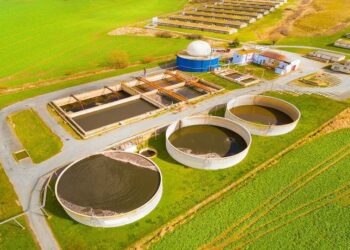GALVESTON, Texas – As deepwater basin exploration and development activity increases, so does the need for more capable and reliable equipment and innovative technology – two subjects of technical sessions at the recent 2014 SPE Deepwater Drilling and Completions Conference in Galveston, Texas.
Deepwater operations, one of the most challenging and important resource plays, will continue to form a vital share of the energy mix in the years ahead. Considering the Deepwater Horizon incident in 2010, the industry recognized the need to better prepare for an event of when an operator loses control and subsequent containment of a well.
Addressing these issues, Charles Miller, chief technology officer, Marine Well Containment Co. (MWCC) gave a presentation on “Integration, Commissioning and Testing on MWCC’s First Modular Capture Vessel – Expanded System Progress.†The company, an independent entity aimed at developing technical and physical solutions to subsea oil and gas blowouts in the deepwater US Gulf of Mexico, is comprised of 10 member companies: Anadarko Petroleum Corp., Apache Corp., BHP Billiton Ltd., BP plc, Chevron Corp., ConocoPhillips Co., ExxonMobil, Hess Corp., Royal Dutch Shell plc, and Statoil ASA.
In July 2014, the company conducted a system integration test (SIT) to validate the functions and capabilities of the newly converted modular capture vessel, Eagle Texas. “The SIT test is the only project that has a goal of never seeing first oil but must be ready at all times,†Miller observed.
Since the company did not want to produce hydrocarbons, the test was designed to use air and water. The SIT went through three phases:
1. Prove that the vessel can achieve a stable and live operation.
2. Show that the instrumentation and control system could react to varying flow rate conditions .
3. Prove that the systems work in an integrated fashion, all within a nine-day time span.
Results from the project proved to be “exceptional,†Miller noted. “There was not a flaw in the start-up. We did experience many of the same problems that most oil fields have when they commence, but that is what we wanted to find out. Our operating workforce worked effectively, and we were able to prove that our processing system could work reliably without any bottlenecks.â€
A few flaws that were pinpointed during the test will be addressed in the long-term preservation and maintenance procedures, Miller noted. MWCC realized that modular assemblies need to be kept primed to maintain pressure on the field, and the need to have instrumentation and controls hooked-up 24/7 to certify that they work and can be operated properly.
“These key learnings will help our team optimize maintenance and deployment processes so we can more efficiently and safely outfit the modular capture vessels (MCVs) with processing equipment in the event of an incident,†Miller told Offshore. “Additionally, it uncovered a few items that required engineered solutions which will ultimately help enhance the operability of the processing equipment.â€
The company is planning another SIT for Eagle Louisiana later this fall. It will confirm its lessons learned from the Eagle Texas.
“Testing the equipment before it’s put into operation will not only prove the capabilities of the MCVs but demonstrate MWCC’s readiness to both industry and regulators,†he said.
Interim vs expanded containment system
MWCC’s original interim containment system, built by Trendsetter Engineering in Houston and available for use since February 2011, is designed to either shut in a well or redirect the flow of hydrocarbons to a subsea riser system and onward to a tanker on the surface. To keep pace with industry needs, the company created an up-rated capping stack with the ability to handle upwards of 350°F (177°C) fluid temperatures, making it the first of its kind.
“The rerate of the single ram capping stack is another step in MWCC’s commitment to keep pace with member needs as they explore at greater depths, pressures, and temperatures,†said Miller.
In addition, the company completed a plan to cap a well under a floating structure. This requires a plan to either move the structure out of the way to allow access to install the capping stack, or to pull the stack underneath the structure for installation.
The expanded containment system, which represents an investment of more than $1 billion by MWCC members, began delivery in 2013, and is expected to be available in 2014. It will also add new subsea umbilical, riser and flowline equipment to its offerings, with the flowlines being the deepest ever supplied for production.
The system will be compatible with a wide range of well designs and equipment, oil and natural gas flow rates, and weather conditions. Enhanced system offerings include the ability to cap and flow a well in water depths up to 10,000 ft (3,048 m), and the capacity to contain up to 100,000 b/d of oil and handle up to 200 MMcf/d of gas.
“Our capabilities span the full-depth of our members’ requirements right now. We can effectively work in 10,000 ft of water and with 15,000 psi,†Miller added. “Some of our members are now looking at pressures greater than 15,000 psi to keep abreast of their deepwater needs.â€
The system also incorporates the use of two specially converted Aframax tankers – the Eagle Texas and the Eagle Louisiana. These two MCVs “are a key component of the company’s expanded containment system,†Miller noted. In an effort to find the most economical solution, the tankers were contracted with AET Tanker Holdings Sdn Bhd, a Malaysian-owned global shipping company specializing in the ocean transport of crude oil and refined products.
The MCVs are unique in that they combine FPSO and dynamic positioning technology in a single hull, forming part of an innovative marine system solution designed to respond in the event of a subsea well control incident. Once on station, the vessels will trade as standard Aframax tankers until mobilized for carbon capture duties should the need arise.
The MCVs are designed to improve response and containment efforts, including decreasing congestion at the incident site; operating up to 5,000 ft (1,524 m) from the wellhead; reducing shuttle tanker activity by providing up to 700,000 bbl of liquid storage capacity; and having the ability to process, store, and offload the liquids to shuttle tankers.
As for manpower, MWCC and Wood Group PSN have formed an offshore reserve response team of 100 reserve operations personnel. The team is contracted to be deployed, at any given moment, to a deepwater well control incident to operate the processing equipment on the MCVs should MWCC’s expanded containment system be required to cap and flow a well. The reserve response team members were hand-selected by Wood Group, and trained to operate and maintain equipment onboard the MCVs during a response.

















































